Planting Bushes In The Yard: Landscaping Shrubs For Nearly Any Purpose
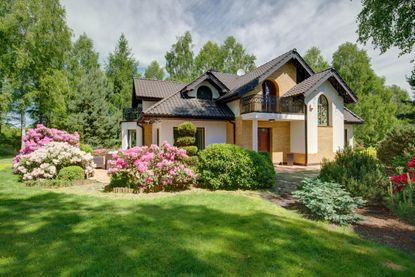

There are numerous types of landscaping shrubs. They can range in size from the smaller forms on up to the larger tree-like varieties. There are evergreen shrubs, which retain their color and leaves year round, and there are deciduous shrubs, which eventually lose their foliage after putting on a colorful fall show. Read on to learn more about landscaping shrubs and their uses.
Choosing Shrubs for the Landscape
Shrubs have many uses within the landscape such as foundation plantings, privacy hedges, and specimen plants. They can be used as backdrops, to define garden beds, and to simply add seasonal interest. Foliage differs from plant to plant, so look for foliage colors that will create a pleasing visual effect and subtle contrast to the other plants within the landscape. Fall foliage colors can range from silver, gold, and variegated varieties to red, purple, and dark green. The best time to plant landscaping shrubs is in the fall or early spring, if necessary. This gives roots plenty of time to become established, upping their chances of survival. Before placing any shrub in the landscape, you should first consider the overall height and width of the shrub once it reaches maturity. There should be adequate space available for the shrub to grow. For instance, if a shrub is being used as a foundation planting, ensure that its mature growth will not block windows or obstruct walkways. Also, consider the appearance of the shrub after its initial blooming period has ceased. Since the majority of shrubs are non-flowering most of the year, try to match them to the conditions of your particular landscape. It is also very important that landscaping shrubs complement their surroundings. Therefore, it is also a good idea to research native shrubs as well as common landscape shrubs in order to become familiar with their growing conditions, especially in your given area.
Common Landscape Shrubs
Some of the most common landscaping shrubs include:
- Azaleas/Rhododendrons - Azaleas and rhododendrons come in a multitude of colors and their striking blooms are a welcome sight in spring. While they typically have a short-lived blooming cycle, many evergreen varieties will provide year-round interest. These shrubs are good choices for foundation plantings, borders, shade and woodland gardens, and specimen plants.
- Forsythia shrubs - The yellow, spring flowers of forsythia provide much needed color after the dull, darkness of winter. Other than its obvious aesthetic purpose, this easy-care shrub makes a great choice for screening and can even soften corners around the landscape.
- Hydrangea shrubs - Hydrangeas are also quite popular in the landscape. There are various forms available (pink, blue, and white), and their clustered, summer-flowering blooms are spectacular. Hydrangea shrubs work well in woodland gardens, informal borders, and as specimen plantings.
- Rose of Sharon - Available in a variety of colors including pink, purple, and white, this shrub not only makes an excellent accent in the landscape but also provides good screening when grouped together along property lines. This shrub can also be used to create lovely backdrops for smaller shrubs and garden plants. Rose of Sharon shrubs may require seasonal pruning to prevent them from having an untamed appearance, especially when planted near the foundations of homes.
- Boxwood shrubs - Boxwoods are one of the most common evergreen landscaping shrubs. These are oftentimes used as foundation plantings as well as for edging. They are also ideal for creating walled gardens or privacy hedges.
- Juniper shrubs - Another good evergreen shrub is juniper, with the low-growing variety most commonly used within landscapes. These shrubs are well suited for filling in empty spaces between other, larger shrubs and trees.
- Holly shrubs - There are many types of holly for the landscape. English holly, which is most common, is an evergreen shrub popular for its spiny-edged leaves and clusters of red berries, especially during winter. While this shrub can definitely stand on its own, it is commonly used in the landscape as a screening hedge or foundation planting.
- Barberry - The barberry shrub is also commonly used in landscaping. This shrub has thick, green leaves that turn red in the fall and produces numerous berries as well. It is often used in mixed borders with taller shrubs, perennials, and grasses.
Some shrubs for the landscape are used strictly for their pleasant aromas. These include:
- Lilac shrubs - Lilacs are well known for their fragrant, lilac-colored blooms but they are also available in white and yellow varieties. These shrubs have both compact forms and those that can get quite tall. Lilacs do well when massed together for screening or as backgrounds for borders. These shrubs can also stand on their own as specimen plantings.
- Witch hazel - While witch hazel looks more like a tree than a shrub, it is definitely meant to be seen as well as smelled. The yellow, fall blooms enable it to blend in nicely with a background of evergreens and should be placed somewhere nearby so its sweet scent can be enjoyed.
- Viburnum shrubs - The intense, sweet clove scent of viburnum shrubs shrubs is often used in foundation plantings or mixed borders.
- Roses - Nothing can quite compare to the aromatic scents given off by roses. While these shrubs are often used simply for aesthetic purposes, they can also be used as attractive privacy hedges and foundation plantings.
- Weigela - Weigela shrubs shrubs bloom profusely throughout spring and fall. Many varieties are available to choose from, including those that are variegated. Besides their stunning appearance, these shrubs can also be used in informal gardens or mass planted for hedges.
There are other ways to use shrubs in the landscape. Nearly any shrub can be grown in containers; therefore, even the smallest of landscapes can be home to them, including balconies. They make excellent focal points and are ideal for screening. Whether you are considering using them for outlining boundaries, privacy and screening, foundation planting, or simply as specimen plants, you should always plan ahead in order to find the right landscaping shrub for your intended purpose.
Gardening tips, videos, info and more delivered right to your inbox!
Sign up for the Gardening Know How newsletter today and receive a free download of our most popular eBook "How to Grow Delicious Tomatoes."

Nikki Tilley has been gardening for nearly three decades. The former Senior Editor and Archivist of Gardening Know How, Nikki has also authored six gardening books.
-
 How To Get Rid Of Mosquitoes In The Garden: 9 Natural Ways To Make Them Buzz Off!
How To Get Rid Of Mosquitoes In The Garden: 9 Natural Ways To Make Them Buzz Off!How to get rid of mosquitoes is on the minds of people in the summer in almost every region of the world. Learn how to repel the pests without toxic chemicals.
By Mary Ellen Ellis
-
 Monkey Orchid Care: How To Grow This Fascinating Species
Monkey Orchid Care: How To Grow This Fascinating SpeciesThe monkey orchid (Dracula simia) bears a remarkable resemblance to its namesake and, with a little know-how, can be successfully grown as a houseplant.
By Bonnie L. Grant
-
 Best Short Bushes For Erosion Control
Best Short Bushes For Erosion ControlErosion is a serious problem that can be solved with the right plants. Read about some low-growing shrubs that can help with erosion control.
By Bonnie L. Grant
-
 Super Hardy Shrubs And Trees For Northern Climates
Super Hardy Shrubs And Trees For Northern ClimatesWhat are the most cold hardy shrubs and trees for northern climates? Click here to find out.
By Teo Spengler
-
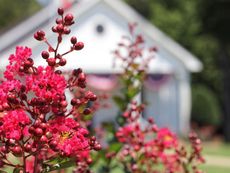 Flowering Shrubs That Like Full Sun And Heat
Flowering Shrubs That Like Full Sun And HeatSome types of flowering shrubs love full sun and summer heat. Read on for full sun shrub suggestions.
By Teo Spengler
-
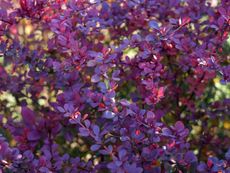 Types Of Shrubs With Purple Leaves
Types Of Shrubs With Purple LeavesIn a garden full of greens and pastels, many gardeners use purple bushes and shrubs for a touch of drama. Here are our favorites.
By Teo Spengler
-
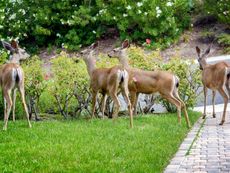 Flowering Shrubs That Are Deer Resistant
Flowering Shrubs That Are Deer ResistantThere is almost nothing a deer will not eat if it is hungry enough, but some plants are better than others. Read on for information on flowering deer resistant shrubs.
By Teo Spengler
-
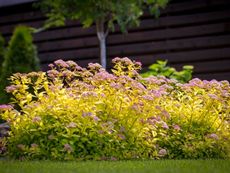 Blooming Invasive Bushes To Avoid
Blooming Invasive Bushes To AvoidWhen it comes to pretty flowers on honeysuckle, scotch broom, and butterfly bush, invasiveness hasn’t always mattered. Today, gardeners know better.
By Mary Ellen Ellis
-
 Easy To Care For Flowering Bushes
Easy To Care For Flowering BushesFlowering shrubs are a joy in the landscape, but many gardeners worry about maintenance. Read on for ideas on easy care flowering bushes.
By Teo Spengler
-
 Pretty Purple Flowering Shrubs
Pretty Purple Flowering ShrubsAll flowering shrubs add interest and color to the garden, so why not pick purple? Here are our top recommendations.
By Teo Spengler